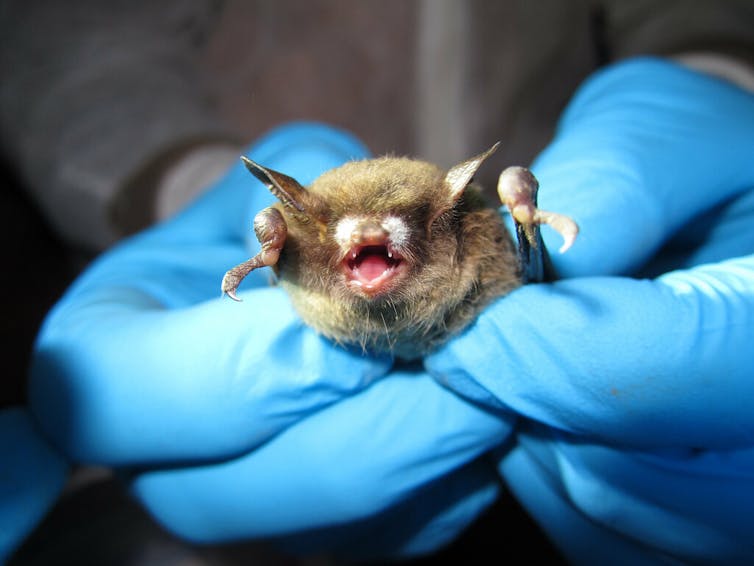By Catherine Cullingham
DNA testing kits for humans and their pets are a growing business. The draw for consumers ranges from understanding why their dog looks like a Labrador but acts like a German Shepherd, or what diseases they might be prone to.
For a nominal fee, individuals collect saliva from their pet and mail it to the testing company. A lab extracts DNA from the sample, which is then analyzed at many sites within the genome, called single nucleotide polymorphisms (SNPs, and pronounced snips). SNPs are places in the DNA sequence where there is a genetic variant.
In humans, SNPs occur approximately every 1,000 base pairs of DNA, which means there are about five million SNPs in each person. Dog testing kits may analyze more than 20,000 SNPs to determine breeds.
We can apply the same approaches used in these DNA testing kits to wildlife conservation and management. My research in conservation genetics has used genetic testing in several projects, including tracking raccoons’ movements to understand the spread of raccoon rabies.
Building wild databases
Because DNA is inherited from parents, siblings will share more genetic variants with each other than they would with anyone else. The more related individuals are, the more variants they have in common. Through analyzing known dog breeds, DNA testing companies know which SNP variants are more common within a breed.
For dog testing kits to be most effective, they require a large database of DNA samples from individuals of known breeds to develop baseline data. This is a challenge for wildlife researchers because access to samples is difficult. Wildlife researchers often employ creative techniques to obtain DNA samples, such as hair traps for bear samples or collecting caribou scat.
Another obstacle is knowing where the genetic variants are found in the genomes of most wildlife species. Thankfully, the importance of genomic information for human health has driven advances in DNA sequencing. This has lowered the costs and improved access to technology that was once too expensive.
Knowing where individuals originate can be very important for wildlife conservation and management. For example, researchers used SNPs to identify different stock populations of Atlantic cod throughout the North Atlantic. Their genetic assessment of populations could be used to track fisheries activities and identify illegal harvesting, which is nearly impossible to do without DNA information yet critical to ensure healthy stocks into the future.
Identifying health risk factors
To identify risk factors in dogs, researchers compare genetic variation in individuals with and without the disease or condition, such as the potentially devastating rupture of the anterior cruciate ligament. These are called genome-wide association studies.
There are a number of examples in nature where disease is resulting in significant loss of species biodiversity. The chytrid fungus (Batrachochytrium dendrobatidis) affects amphibian populations worldwide, resulting in global declines. White-nose syndrome, caused by the fungus Pseudogymnoascus destructans, has resulted in declining bat populations in North America. Chronic wasting disease, which affects deer, is considered an emerging threat to global biodiversity.

The identification of genetic variants that are associated with disease resistance in these systems would help wildlife managers understand disease spread. This could, in turn, identify what options may be available for management of the disease and the affected species.
The future of wildlife research
There are a growing number of examples that demonstrate the feasibility of this approach, such as in the case of infectious upper respiratory tract disease in gopher tortoises. Researchers can use this information to identify tortoises that are resistant to the infection and include them in breeding programs for this endangered species.
The importance of genomic research for humans has helped to drive improvements in the technology that make it more cost-effective to study wildlife species. While there are a number of challenges that researchers face in using DNA, the benefits to wildlife conservation and management are clear.
This article is republished from The Conversation under a Creative Commons license. Carleton University is a member of this unique digital journalism platform that launched in June 2017 to boost visibility of Canada’s academic faculty and researchers. Interested in writing a piece? Please contact Steven Reid or sign up to become an author.
All photos provided by The Conversation from various sources.
![]()
Tuesday, February 18, 2020 in The Conversation
Share: Twitter, Facebook



